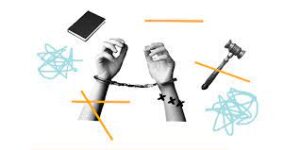Juvenile delinquency refers to illegal or antisocial behavior committed by individuals who are minors, typically under the age of 18, in the United States. This essay provides a detailed examination of juvenile delinquency in the USA, covering its causes, consequences, legal responses, prevention strategies, and societal implications.
Understanding Juvenile Delinquency
Definition:
Juvenile delinquency encompasses a wide range of behaviors, including vandalism, theft, drug offenses, violence, and gang involvement, among others. These behaviors violate societal norms and laws and can have serious consequences for both the individuals involved and the community at large.

Developmental Context:
Juvenile delinquency often occurs during adolescence, a period characterized by significant physical, emotional, and cognitive changes. Factors such as peer pressure, family dynamics, socioeconomic status, and exposure to violence can influence the likelihood of delinquent behavior.
Risk Factors:
Several risk factors increase the likelihood of juvenile delinquency, including family dysfunction, substance abuse, academic failure, mental health disorders, lack of parental supervision, and exposure to violence or trauma. These risk factors interact in complex ways, contributing to the development of delinquent behavior.
Consequences of Juvenile Delinquency
Individual Consequences:
Juvenile delinquency can have lasting effects on individuals, including involvement in the criminal justice system, educational difficulties, mental health issues, substance abuse problems, and impaired social relationships. Delinquent behavior during adolescence also increases the likelihood of continued criminal activity in adulthood.
Community Impact:
Juvenile delinquency poses significant challenges for communities, including increased crime rates, reduced property values, strained social services, and negative perceptions of safety. High levels of juvenile delinquency can undermine community cohesion and economic development, perpetuating cycles of poverty and crime.
Legal Responses to Juvenile Delinquency
Juvenile Justice System:
The juvenile justice system in the USA is designed to address delinquent behavior among minors in a manner that prioritizes rehabilitation and intervention over punishment. Juvenile courts adjudicate cases involving minors, with the goal of providing appropriate treatment, services, and supervision to address underlying issues contributing to delinquency.
Diversion Programs:
Diversion programs offer alternative pathways for youth involved in delinquent behavior, diverting them away from formal court processing and incarceration. These programs may include counseling, community service, educational interventions, substance abuse treatment, and restorative justice practices.
Legal Rights of Juveniles:
While juveniles have many of the same legal rights as adults, including the right to legal representation and due process, the juvenile justice system operates under a different set of procedures and principles. For example, juveniles may be eligible for expungement of their records or sealing of court proceedings to protect their future opportunities.
Prevention Strategies
Early Intervention:
Early identification and intervention are critical in preventing juvenile delinquency. Programs and services that target at-risk youth and their families, such as home visitation programs, parenting classes, and preschool enrichment programs, can promote healthy development and reduce the likelihood of delinquent behavior.
School-Based Programs:
Schools play a crucial role in preventing juvenile delinquency by providing academic support, counseling services, extracurricular activities, and positive role models. School-based prevention programs aim to improve school engagement, social skills, and academic achievement, reducing the risk of delinquency.
Community Partnerships:
Collaboration between law enforcement agencies, schools, social service providers, community organizations, and residents is essential in preventing juvenile delinquency. Community policing initiatives, neighborhood watch programs, and youth mentoring programs can create supportive environments and opportunities for positive youth development.
Societal Implications
Juvenile delinquency is not just an individual or familial issue but also a societal concern with broader implications for public safety, social welfare, and economic stability. High rates of juvenile delinquency can strain resources for law enforcement, courts, and social services, diverting resources away from other pressing needs. Addressing juvenile delinquency requires a coordinated effort across multiple sectors, including government, education, healthcare, and community organizations.

Impact of Technology
Technology, particularly the internet and social media, has transformed the landscape of juvenile delinquency in several ways:
Cyberbullying:
Online platforms provide avenues for cyberbullying, harassment, and spreading harmful content, contributing to emotional distress and antisocial behavior among youth.
Online Predation:
Youth may become victims of online predators who exploit their vulnerability and naivety, leading to dangerous encounters or exploitation.
Digital Crimes:
Technology facilitates the commission of digital crimes, such as hacking, identity theft, and distribution of illicit content, which can have serious legal consequences for juveniles.
Efforts to address juvenile delinquency must consider the impact of technology and develop strategies to promote responsible online behavior and protect youth from online risks.
Disproportionate Representation
Certain demographic groups, including racial and ethnic minorities, low-income individuals, and youth with disabilities, are disproportionately represented in the juvenile justice system:
Racial Disparities:
African American and Hispanic youth are overrepresented in juvenile detention facilities and are more likely to experience harsher treatment and sentences compared to their white counterparts, reflecting broader systemic inequalities in the justice system.
Socioeconomic Factors:
Youth from low-income families are more likely to experience risk factors associated with delinquency, such as unstable housing, limited access to education and healthcare, and exposure to violence and trauma.
Addressing disparities in the juvenile justice system requires addressing underlying systemic inequalities and providing equitable access to resources and opportunities for all youth, regardless of their background

.
Effectiveness of Rehabilitation Programs
Rehabilitation programs play a crucial role in addressing juvenile delinquency and preventing recidivism:
Evidence-Based Interventions:
Programs that are based on research and proven effective in addressing the underlying causes of delinquency, such as cognitive-behavioral therapy, family therapy, and substance abuse treatment, have been shown to reduce reoffending rates and promote positive outcomes.
Community-Based Alternatives:
Placing juveniles in community-based programs and treatment facilities, rather than juvenile detention centers or correctional facilities, can provide a more rehabilitative environment and better support the reintegration of youth into society.
Investing in rehabilitation programs that prioritize education, vocational training, mental health services, and family support can help address the root causes of delinquency and promote long-term positive outcomes for youth.
Restorative Justice Approaches
Restorative justice approaches focus on repairing harm and addressing the needs of both victims and offenders:
Victim-Offender Mediation:
Bringing together victims and offenders in facilitated dialogues allows them to discuss the impact of the offense, express their feelings, and work towards mutual understanding and resolution.
Community Service and Restitution:
Offenders may be required to perform community service or make restitution to victims as a way of taking responsibility for their actions and contributing to the community.
Restorative justice approaches prioritize accountability, empathy, and healing, offering alternatives to traditional punitive measures and promoting the rehabilitation and reintegration of juvenile offenders.
Conclusion
Juvenile delinquency is a complex and multifaceted issue with significant implications for individuals, families, communities, and society as a whole. Understanding the root causes of delinquent behavior, implementing evidence-based prevention and intervention strategies, and providing support and resources for at-risk youth are essential steps in addressing this issue. By investing in the well-being and development of young people and creating supportive environments that foster positive outcomes, the USA can work towards reducing juvenile delinquency and building safer, healthier communities for all.

